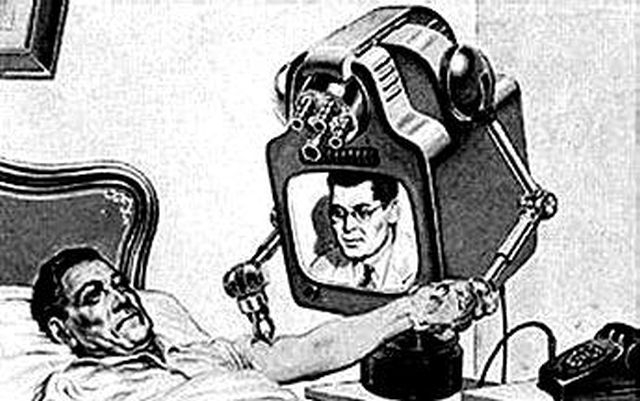Teledoctors: Inexpensive and Accessible Health Care Solutions
Teledoctors: Inexpensive and Accessible Health Care Solutions
Blog Article
Teledoctors: Bridging the Void Between Individuals and Healthcare Providers
The development of teledoctors stands for a substantial shift in the medical care landscape, providing solutions to long-standing accessibility problems dealt with by people and companies alike. By incorporating telemedicine right into typical practices, health care systems can reach remote and underserved populaces, providing essential clinical appointments without the barriers of range and travel. This standard change not just boosts patient engagement however additionally enhances resource appropriation for providers. However, the extensive adoption of teledoctors increases essential questions concerning the sustainability of such practices and the effects for future healthcare distribution. What difficulties lie ahead in ensuring this model's efficiency and equity?
Rise of Telemedicine

The increase of telemedicine is additionally fueled by the requirement for cost-effective health care. Medical care systems globally are under stress to reduce expenditures while keeping top quality treatment, and telemedicine provides a feasible option. By minimizing the demand for physical gos to, telemedicine lowers overhead costs for healthcare centers and ultimately decreases the financial worry on individuals.
Furthermore, the COVID-19 pandemic acted as a stimulant, increasing the adoption of telemedicine methods. Social distancing measures and the need to minimize direct exposure danger demanded a change in the direction of remote assessments, prompting governing bodies to sustain and adjust telehealth services. This change has not only proven telemedicine's efficiency however also its possible to evolve as a staple component of modern health care systems.
Benefits for Clients
Largely, telemedicine enhances accessibility, permitting individuals in remote or underserved areas to seek advice from medical care carriers without the need for comprehensive traveling. Telemedicine additionally supplies patients the comfort of obtaining clinical guidance and therapy from the comfort of their homes, decreasing the time and cost connected with traveling to a health care center.
Moreover, telemedicine supports connection of care by promoting normal follow-ups and surveillance, which are important for handling persistent problems. People can easily arrange visits and gain access to healthcare solutions outside typical workplace hours, suiting their hectic lifestyles. This versatility brings about enhanced individual interaction and adherence to treatment plans, potentially causing far better health results.
Additionally, telemedicine can aid minimize the threat of infection transmission, a problem enhanced by the COVID-19 pandemic. By reducing the need for in-person check outs, people can avoid crowded waiting rooms and reduce direct exposure to infectious health problems. Ultimately, telemedicine empowers clients by supplying timely, effective, and customized medical care solutions.
Advantages for Carriers
For doctor, telemedicine provides substantial benefits that boost the efficiency and reach of their practice. By leveraging electronic innovation, suppliers can expand their services to a broader market, including those in remote or underserved locations. This not just relieves geographical obstacles yet additionally enhances individual retention and purchase by making medical care more obtainable.
Another secret advantage is the decrease in above expenses. With telemedicine, the need for physical space decreases, allowing providers to save money on property and operational expenditures. Furthermore, telemedicine promotes much better time administration by reducing the demand for travelling and enabling for more flexible scheduling. This flexibility can lead to increased client consultations per day, consequently improving income possibility.
Telemedicine additionally fosters a much more joint setting for health care suppliers. teledoctors. It allows seamless sharing of important source client details among specialists, improving diagnostic precision and treatment outcomes. In addition, electronic platforms can incorporate with digital health and wellness records (EHRs), improving data accuracy and improving administrative tasks
In addition, telemedicine improves person contentment, which is vital for company online reputation and success. By providing hassle-free and timely care, companies can improve patient commitment and involvement, further strengthening the provider-patient connection.
Overcoming Difficulties
While telemedicine offers various benefits for doctor, it also presents obstacles that need cautious factor to consider. One considerable difficulty is guaranteeing data privacy and safety. As client details is transmitted digitally, the risk of information violations rises, necessitating durable cybersecurity steps. Doctor need to abide by stringent policies like HIPAA to safeguard sensitive info, consequently calling for investment in protected systems and continuous staff training.
An additional difficulty is the digital divide, which can impede accessibility to telemedicine solutions. Not all clients have equivalent access to the required modern technology or internet connection, particularly those in country or underserved locations. This variation can exacerbate existing healthcare inequalities, making it critical for companies to discover alternate remedies, such as partnerships with community companies, to link this void.
Additionally, there are restrictions in performing physical exams remotely. Particular problems need in-person analysis, highlighting the need for a hybrid design that incorporates telemedicine with typical visits. When telemedicine is appropriate and guaranteeing smooth transitions between virtual and in-person treatment., service providers should browse these obstacles by creating methods to determine.
Future of Health Care
The future of medical care is poised for a transformative development, driven by the rapid integration of innovation and advancement. Central to this shift is the rise of telemedicine, which is redefining just how clinical services are accessed and delivered. With advancements in data, telehealth platforms are ending up being more advanced, providing real-time appointments, remote patient tracking, and customized treatment plans. This not only boosts person ease yet additionally expands accessibility to health care, especially in rural and underserved locations.
Fabricated knowledge (AI) and device learning are additionally set to play pivotal roles. These innovations can assess substantial amounts of information, providing anticipating insights into patient health, boosting diagnostic precision, and individualizing treatment plans. AI-driven devices can boost medical care carriers' capabilities, resulting in more informed decision-making and go better individual results.
In addition, wearable modern technology and Internet of Medical Points (IoMT) devices are transforming individual interaction and proactive health administration. These tools enable constant health tracking, permitting very early detection of prompt treatments and prospective problems.
As these technologies remain to development, they guarantee to produce a much more effective, available, and patient-centric health care system, eventually linking the void in between individuals and medical care suppliers. - teledoctors
Final Thought
Teledoctors are changing medical care by dramatically enhancing accessibility and efficiency through remote appointments. This advancement supports clients in underserved locations by providing prompt medical guidance without calling for physical brows through, hence boosting client involvement and connection of care. websites Doctor benefit from extra reliable time management and improved collaboration possibilities. In spite of difficulties such as regulatory concerns and technological obstacles, the future of medical care shows up increasingly comprehensive and effective due to the assimilation of telemedicine right into standard care designs.

As telemedicine continues to reshape medical care delivery, clients stand to obtain significantly from this transformation. Primarily, telemedicine enhances ease of access, enabling clients in remote or underserved areas to speak with health care carriers without the requirement for comprehensive traveling. Telemedicine additionally uses patients the benefit of getting clinical suggestions and treatment from the comfort of their homes, lowering the time and expense associated with taking a trip to a healthcare center.
Inevitably, telemedicine equips people by offering prompt, effective, and customized healthcare services.
Report this page